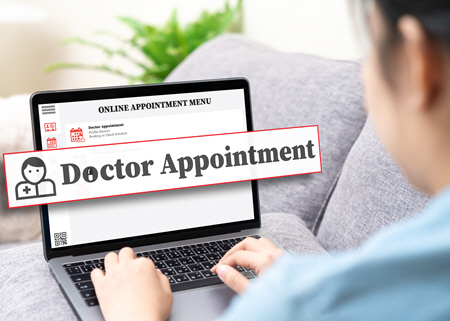 Here’s convenience at your fingertips.
Here’s convenience at your fingertips.
Doctors have connected medicine with technology for many years, just like you. Researching conditions and symptoms online has never been simpler.
With a few simple clicks, you can have nearly anything – prescriptions, supplements, or even bacon-shaped Band-Aids – delivered to your door. But to see your provider, you still had to go to their office and sit in a germ-filled waiting room.
These days, however, with telemedicine, technology upgrades health care to be something it’s rarely been before: convenient.
What Is Telemedicine?
Telemedicine transforms how you communicate with your providers by incorporating technology so that you don’t need to be in the same room to receive care.
Telemedicine includes phone calls, video chats, emails, and text messages. People also call it telehealth, digital medicine, e-health, or m-health (for “mobile telehealth”).

How do you use Telemedicine?
All you need is a reliable internet connection and a phone, smartphone, or computer.
Telemedicine saves time and effort as a convenient tool for everyone, but especially if ….
- you live in a rural area or far from my office,
- experience limitations regarding movement, time, or transportation,
- or need medical care while you’re away from home.
Here’s how Telemedicine works.
Depending on what you need, you can get medical services in different ways. Two of the most common are…..
End-to-end encrypted email – With the security of a username and password, an end-to-end encrypted email like ProtonMail, you can send and receive emails, ask for prescription refills, and set up appointments without your information becoming sold to third parties.
Your doctor can also share your lab or imaging test results and tell you what they mean. Receiving information like this is often faster than waiting to talk on the phone.
Virtual appointments – Depending on your preference, you may choose to have an appointment through a phone or video conference. Please make your request for a virtual appointment known at the time of booking, and I email you a webinar link with your confirmation.
 Telemedicine works for many issues but not all.
Telemedicine works for many issues but not all.
Telemedicine has many benefits, but it cannot replace all doctor’s visits.
If you have a long-term illness, you may request a virtual appointment to share home readings like blood pressure or blood sugar levels and discuss them with me. Virtual care can help you decide whether you need to seek in-person care or if it can wait.
If you suffer from cold and flu symptoms, you can get adequate care with herbs from home. If you have sinus pain, for example, your virtual appointment may include self-care tips that walk you through the process of pressing on different parts of your face or neck to relieve pressure and stop the pain.
On the other hand, symptoms related to chronic pain or fatigue may require acupuncture treatment. Signs of infection that need closer care might benefit from Telemedicine, or you might find in-person care to be more effective to treat your condition.
In-person visits are possible.
I also make house calls if your location is close enough for me to get to you.
Please inquire during your appointment booking if you would like to request this service.
Sometimes, only an in-person exam can confirm your diagnosis, and I will let you know if this is the case with your condition.
 How do you get the most out of Telemedicine?
How do you get the most out of Telemedicine?
Try the technology ahead of time. Telemedicine comes in a variety of applications and portals. Before you hop on a virtual appointment with me, make sure you do a trial run to ensure you understand the system and work out any kinks.
You may need to download an application to your phone, device, or computer. You might also have to provide proof of identity or supply a password in a virtual “waiting room” before connecting.
Be prepared. Whether you have a call or a video appointment, please write down your symptoms, medicines you’ve taken, and questions you have so you don’t forget anything when we talk.
Beef up your bandwidth. Are there different places in your home where a Wi-Fi signal is stronger? Technical problems, such as screen freezes, are often the result of slow connection speeds. These kinds of interruptions will quickly make an easy appointment difficult.
Be sure you have an adequate connection in the spot with the strongest signal before attempting to connect. A phone call (310) 902-7222 is a good backup plan if all else fails.
Be Flexible. Remember that you may start with Telemedicine but still end up in your doctor’s office anyway. That is frustrating, but it’ll help you feel better faster.


 Here’s convenience at your fingertips.
Here’s convenience at your fingertips. Telemedicine works for many issues but not all.
Telemedicine works for many issues but not all. How do you get the most out of Telemedicine?
How do you get the most out of Telemedicine?